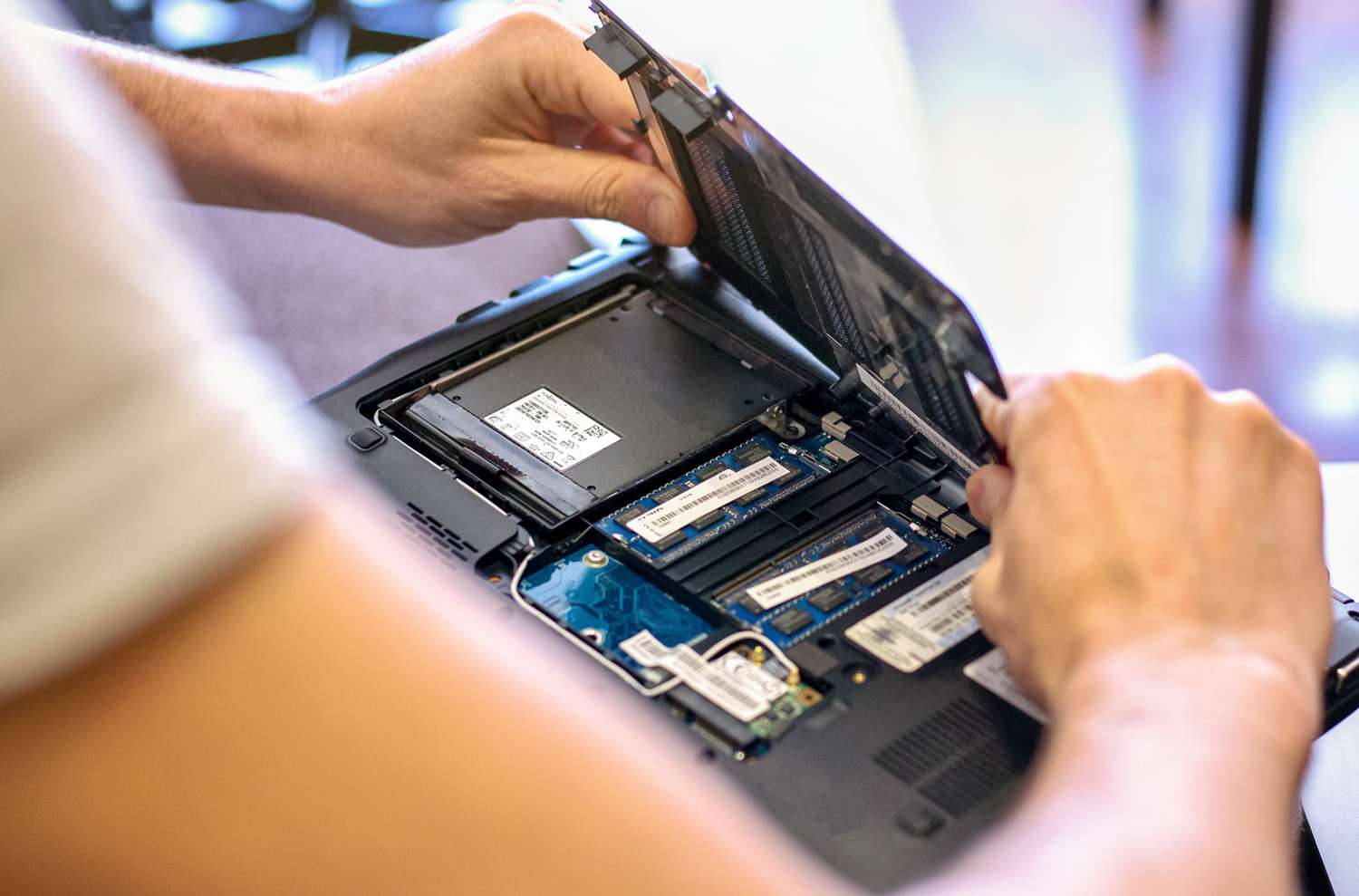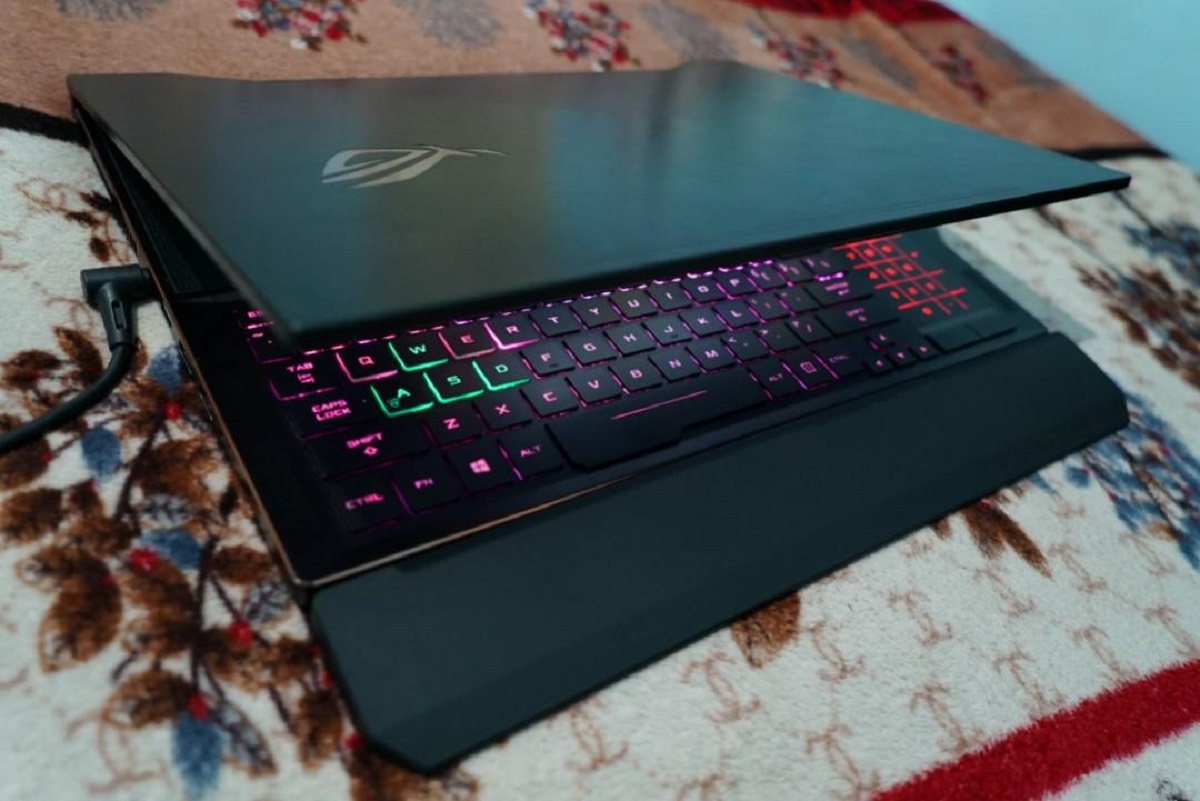Introduction
Welcome to the world of laptops, where the possibilities for productivity and entertainment are endless. Whether you are a student, professional, or gamer, having enough RAM (Random Access Memory) is crucial for the smooth functioning of your laptop. RAM plays a vital role in storing and accessing data, and having a sufficient amount ensures that your laptop can handle multiple tasks simultaneously.
Understanding the capabilities of your laptop’s RAM is essential, as it allows you to determine the maximum capacity and potential for upgrades. Knowing the maximum RAM capacity of your laptop can help you make informed decisions when it comes to choosing the appropriate software, running resource-intensive applications, or planning for future upgrades.
In this guide, we will explore various methods to check the maximum RAM capacity of your laptop. Whether you are a tech-savvy individual or new to the world of computers, we will provide you with the knowledge and tools needed to find this information easily.
Before we dive into the methods, it’s important to note that checking the maximum RAM capacity does not guarantee that you can upgrade your laptop to that specific capacity. Some laptops have RAM limitations depending on their motherboard or chipset compatibility. It’s always best to check the manufacturer’s specifications for upgrade possibilities.
In the following sections, we will explore different approaches to finding your laptop’s maximum RAM capacity. From checking the manufacturer’s website to using system information tools and third-party software, we have you covered. Additionally, we will walk you through how to access the BIOS/UEFI settings and provide advice on consulting with a professional if you need further assistance.
Let’s begin the journey of discovering your laptop’s max RAM capacity, empowering you to make informed decisions and optimize your laptop’s performance!
Understanding RAM Capacity
Before we delve into the methods of checking your laptop’s maximum RAM capacity, let’s take a moment to understand what RAM capacity means and why it is important for your laptop’s performance.
RAM, or Random Access Memory, is a crucial component of your laptop that temporarily stores data that your computer needs to access quickly. It acts as a bridge between the processor and the storage drive, allowing for faster data retrieval and smoother multitasking.
The RAM capacity of your laptop refers to the maximum amount of memory that it can support. This capacity is typically measured in gigabytes (GB), and it determines how much data your laptop can handle at any given time.
Having an adequate amount of RAM is essential for running multiple applications simultaneously, especially memory-intensive programs like video editing software, virtual machines, or graphic design tools. Insufficient RAM can lead to decreased performance, lag, and even system crashes.
When considering upgrading your laptop’s RAM, it’s important to note that not all laptops support RAM upgrades. Some laptops have RAM soldered directly onto the motherboard, making it impossible to remove or replace. Therefore, it’s crucial to check your laptop’s specifications and ensure that it supports RAM upgrades before proceeding.
However, if your laptop does support RAM upgrades, increasing the RAM capacity can significantly enhance its performance. More RAM allows your laptop to store and process larger amounts of data, reducing reliance on virtual memory (hard disk space used as additional RAM). This results in faster data processing, smoother multitasking, and improved overall system performance.
Ultimately, understanding your laptop’s RAM capacity gives you insight into its capabilities and allows you to make informed decisions when it comes to running resource-intensive applications or considering future upgrades.
Now that we have a clearer understanding of RAM capacity and its importance, let’s explore the various methods you can use to check your laptop’s maximum RAM capacity.
Checking Laptop Specifications
One of the simplest and most reliable ways to check your laptop’s maximum RAM capacity is to consult its specifications. Laptop manufacturers provide detailed information about their products, including the maximum RAM capacity, on their official websites or in the user manual that came with your laptop.
To find the specifications of your laptop, follow these steps:
- Locate the model number of your laptop. You can usually find it on the bottom of the laptop or in the system information.
- Visit the manufacturer’s website and navigate to the support or product page.
- Search for your laptop model using the provided search function or browse through the available options.
- Once you’ve found your laptop model, look for the specifications section.
In the specifications section, you should be able to find information about the maximum RAM capacity of your laptop. It is usually listed in gigabytes (GB) and may also include details such as the number of RAM slots and the maximum memory per slot.
If you cannot find the information on the manufacturer’s website, try referring to the user manual that came with your laptop. The user manual often contains detailed specifications and upgrade information for your specific laptop model.
Checking the laptop specifications is a straightforward and reliable method to determine the maximum RAM capacity of your laptop. However, it’s important to note that some laptops have limitations due to their motherboard or chipset compatibility. Therefore, while the manufacturer’s specifications provide a good starting point, it is always recommended to verify this information through additional methods for confirmation.
In the next sections, we will explore other methods, such as using system information tools, third-party software, and accessing the BIOS/UEFI settings, to cross-verify your laptop’s maximum RAM capacity. Let’s dive in!
Checking Manufacturer’s Website
One of the most reliable sources for finding accurate information about your laptop’s maximum RAM capacity is the manufacturer’s website. Laptop manufacturers typically provide detailed specifications and upgrade information for their products, including the RAM capacity, on their official websites.
To check your laptop’s maximum RAM capacity on the manufacturer’s website, follow these steps:
- Identify the manufacturer of your laptop. This information can usually be found on the laptop’s branding or in the user manual.
- Visit the manufacturer’s official website.
- Look for a “Support” or “Products” section on the website.
- Navigate to the page for your specific laptop model using the provided search function or by browsing the available options.
- On the product page, you should find detailed specifications, including the maximum RAM capacity of your laptop.
The maximum RAM capacity is typically mentioned in gigabytes (GB) and may also include information on the number of RAM slots available and the maximum memory supported per slot. Pay attention to these details, as they will help you determine the right RAM upgrade options for your laptop.
If you are unable to find the information on the website, try contacting the manufacturer’s support team directly. They will be able to provide you with the accurate information about your laptop’s maximum RAM capacity and any other related details you might need.
Checking the manufacturer’s website is one of the most reliable ways to find information about your laptop’s maximum RAM capacity. However, it’s always a good idea to cross-verify this information using other methods, such as system information tools or third-party software, to ensure accuracy.
In the next sections, we will explore additional methods to check your laptop’s maximum RAM capacity, so let’s keep going!
Using System Information Tool
If you prefer a more hands-on approach to finding your laptop’s maximum RAM capacity, you can utilize the built-in System Information tool available on most operating systems. This tool provides detailed information about your laptop’s hardware, including the installed RAM and the maximum RAM capacity it supports.
To access the System Information tool, follow these steps:
- On Windows: Press the Windows key, type “System Information,” and select the corresponding application from the search results. On macOS: Click on the Apple menu, select “About This Mac,” and click on “System Report.”
- In the System Information window, navigate to the “Memory” or “RAM” section.
- Here, you will find information about the installed RAM, such as the type and size of the modules. Look for the “Maximum Capacity” or “Total Slots” entry to determine the maximum RAM capacity your laptop can support.
Keep in mind that the System Information tool provides accurate information about your laptop’s current RAM configuration and the maximum capacity it can support. However, it is always a good idea to verify this information through multiple methods, as discrepancies may occur.
If you are using a different operating system or cannot find the System Information tool, you can also use third-party software to gather information about your laptop’s RAM. There are various software options available, such as CPU-Z or Speccy, which provide detailed system information, including the RAM specifications and maximum capacity.
Using the System Information tool or third-party software allows you to directly gather information about your laptop’s maximum RAM capacity without relying on external sources. With this knowledge, you can make informed decisions regarding RAM upgrades or compatibility with resource-intensive applications.
Next, we will explore another method to check your laptop’s maximum RAM capacity by accessing the BIOS/UEFI settings. Let’s continue!
Using Third-Party Software
If you’re looking for an alternative method to check your laptop’s maximum RAM capacity, utilizing third-party software can be a reliable option. There are several software programs available that provide in-depth system information and can display your laptop’s RAM specifications, including the maximum capacity it can support.
Here’s how you can use third-party software to check your laptop’s maximum RAM capacity:
- Research and choose a reputable system information tool that provides detailed hardware information, including RAM specifications.
- Download and install the selected software program onto your laptop.
- Launch the software and navigate to the RAM or memory section.
- Within this section, you should be able to find information such as the installed RAM size, type, and speed. Look for the maximum capacity supported by your laptop.
It’s important to note that different third-party software may offer varying features and interfaces. However, they all aim to provide comprehensive system information, including details about your laptop’s maximum RAM capacity.
Keep in mind that while third-party software can be useful for checking your laptop’s maximum RAM capacity, it’s important to choose a reputable program and download it from trusted sources. Additionally, be cautious of adware or bundled software that may accompany some free software downloads. Always make sure to perform a virus scan on any downloaded software before installation.
Using third-party software can provide you with valuable insights into your laptop’s RAM specifications and maximum capacity. However, for additional confirmation, it is recommended to cross-verify this information with other methods, such as checking the manufacturer’s website or using the System Information tool.
In the next section, we will explore another method to check your laptop’s maximum RAM capacity – accessing the BIOS/UEFI settings. Let’s continue!
Checking BIOS/UEFI Settings
If you prefer to get direct information from your laptop’s hardware settings, accessing the BIOS (Basic Input/Output System) or UEFI (Unified Extensible Firmware Interface) settings can provide you with valuable details about your laptop’s maximum RAM capacity.
Here’s how you can check your laptop’s maximum RAM capacity through the BIOS/UEFI settings:
- Restart your laptop and continuously press the designated key to enter the BIOS/UEFI settings during the startup process. The key to access these settings may vary depending on your laptop’s manufacturer, such as Del, F2, F10, or Esc.
- Once inside the BIOS/UEFI settings, navigate to the “System Information,” “System Configuration,” or a similar section that provides hardware details.
- Look for information related to your laptop’s RAM, such as the installed size, speed, and the maximum supported capacity. This information should be clearly displayed in the BIOS/UEFI settings.
It’s important to note that BIOS/UEFI interfaces may vary among different laptop manufacturers, so the exact steps and naming of the options may differ slightly. However, most BIOS/UEFI settings provide detailed information about the laptop’s hardware, including the RAM specifications.
Checking the maximum RAM capacity through the BIOS/UEFI settings can provide you with accurate and direct information from your laptop’s hardware. It allows you to double-check the specifications mentioned on the manufacturer’s website or obtain information in case you cannot find it through other methods.
If you are unsure about accessing the BIOS/UEFI settings or navigating through the options, it’s recommended to refer to your laptop’s user manual or consult the manufacturer’s support for guidance.
In the next section, we will discuss the option of consulting with a professional to obtain accurate information about your laptop’s maximum RAM capacity. Let’s continue the journey!
Consult with a Professional
If you’re still unsure about your laptop’s maximum RAM capacity or need expert advice on upgrading your RAM, consulting with a professional is a great option. Professionals, such as computer technicians or IT specialists, have extensive knowledge and experience with different laptop models and can provide accurate information and guidance tailored to your specific needs.
Here’s how you can consult with a professional regarding your laptop’s maximum RAM capacity:
- Research local computer repair shops or IT support services that specialize in laptop repairs and upgrades.
- Contact the selected professionals and explain your query or specific needs, such as determining the maximum RAM capacity of your laptop.
- Arrange for a consultation or visit the store to discuss your laptop’s specifications and potential RAM upgrades.
- Provide the professional with as much information about your laptop as possible, including the make, model, and any other relevant details.
- Listen to their expert advice and recommendations based on your specific requirements and budget.
By consulting with a professional, you can gain valuable insights into your laptop’s maximum RAM capacity and receive personalized recommendations for upgrading your RAM. They can also guide you on the compatibility of different RAM modules with your laptop and help you choose the best option to optimize your laptop’s performance.
While consulting with a professional may come at a cost, it ensures that you receive accurate information and professional guidance that caters to your specific requirements. It’s especially helpful if you are new to laptops or uncertain about the upgrading process.
Remember to do your research and choose a reputable professional or repair service to ensure that you receive reliable advice and quality service.
Now that we have discussed various methods to check your laptop’s maximum RAM capacity, let’s summarize the information we’ve covered.
Conclusion
Checking your laptop’s maximum RAM capacity is an essential step towards optimizing its performance and ensuring it meets your specific needs. By understanding the capabilities of your laptop’s RAM, you can make informed decisions when it comes to running resource-intensive applications, multitasking, or planning for future upgrades.
In this guide, we explored several methods to check your laptop’s maximum RAM capacity. These methods include checking the manufacturer’s website, using the System Information tool, utilizing third-party software, accessing the BIOS/UEFI settings, and consulting with a professional.
Checking the manufacturer’s website is a reliable method that provides accurate information about your laptop’s specifications. The System Information tool and third-party software offer direct insights into your laptop’s RAM details, while accessing the BIOS/UEFI settings gives you hardware-specific information. Consultation with a professional ensures personalized guidance and expert advice tailored to your needs.
Remember to cross-verify information gathered from different sources to ensure accuracy. Additionally, be aware that some laptops have limitations on RAM upgrades due to motherboard or chipset compatibility, so it’s essential to review your laptop’s specifications carefully.
By following the methods discussed in this guide, you can confidently check your laptop’s maximum RAM capacity and make informed decisions when it comes to upgrading or optimizing your laptop’s performance.
We hope this guide has provided you with the knowledge and tools needed to determine your laptop’s maximum RAM capacity. Empower yourself with this information, and unleash the full potential of your laptop!

























